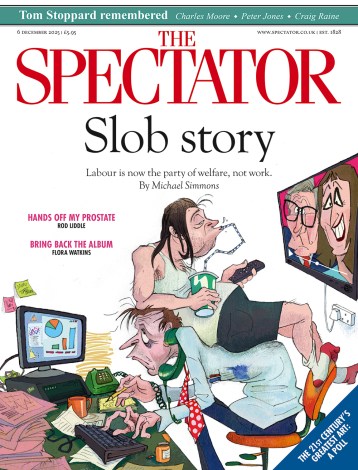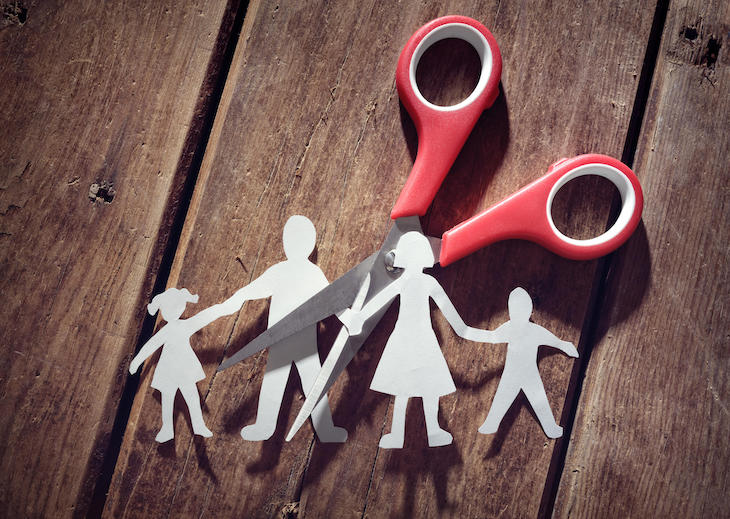Another year of GCSE results has prompted another bout of soul searching about the underachievement of white working class pupils. No lesser figure than Education Secretary Bridget Phillipson has led the mourning this week, risking the ire of her colleagues with some bravery.
It’s not hard to find declining marriage at the heart of almost every domestic challenge we face
Yet the grim truth is that this is not, ultimately, an education issue. Plenty of children in exactly the same schools will do just fine: same facilities, same teachers, same exam papers, better results. Nor is it a poverty issue as we are so often told – some ethnic groups on Free School Meals don’t just do better than their poor white peers, they do far better than even the average. And the idea that skin colour itself may play a role quickly falls apart with, well, any common sense at all. But if you need some evidence then when we divide ethnicity by nationality, Black African children tend to do much better than Black Caribbean, for example.
There are of course many reasons why a child may do well or poorly at school but new analysis of the most recent Family Resources Survey by the Centre for Social Justice (CSJ) points the finger squarely at a single major factor above all others: family stability. What does correlate with exam results in every ethnicity is marriage rates. The more stable your home, the better you do.
White working class children are at the bottom of the pile in marriage rates, and so too in school. Just two in ten children in the poorest white quintile live with married parents compared to almost nine in ten of the wealthiest white quintile.
Furthermore, if we compare white against non-white we discover that, while just two in ten poor white children live with married parents, this rises to almost six in ten among poor children in non-white families. The difference is vast – and the difference this makes to children is a known known. Research from the United States has been pretty clear on this for years. Even accounting for poverty, children who are in what researchers call a ‘fragile family’ (where parents are cohabiting or alone), are twice as likely not to graduate from high school. Research among 5,000 adults in the UK almost exactly replicated this result a few years later.
But this warning is not just about education. The collapse in family stability (with the UK’s marriage rate falling by over two-thirds in less than fifty years) is now undermining almost every part of public life.
Further new analysis of ONS figures to be published in a forthcoming CSJ paper finds the huge impact it is having on our welfare system too. It finds that the chances of lone parent families experiencing long term worklessness is almost one in three. In a couple family that probability falls to just one in FIFTY. Long term unemployment is essentially not a concern in married households. Despite the majority of UK children now being born to unmarried parents (when it was almost unheard of just fifty years ago) this goes completely unacknowledged, far less discussed, in the welfare debate.
It’s not just true that it has an impact on low income families – it’s true right up the income scale. Yet more new CSJ analysis of recent census data has discovered that in every single year of life from your mid twenties to your 100th birthday, marriage rates perfectly reflect income deciles: if you’re married you’re more likely to earn more and if you earn more you are more likely to be married – in every year of life. It’s difficult to unstick cause and effect of course – rich people are more likely to get married too – but as the GCSE and employment figures show, marriage is a buffer from poverty as well as a route out: social capital brings financial capital with it.
In fact, if you are willing to look, it’s not hard to find declining marriage at the heart of almost every domestic challenge we face. The relationship between fatherlessness and crime is already well established as the Ministry of Justice pulls its hair out over our stuffed prisons. Stark figures from the Institute for Fiscal Studies show that there is no home ownership problem at all among married couples.
Over 80 per cent of married mothers are owner occupiers compared to just one in ten lone mothers. Conversely only one in ten married mothers live in social housing compared to the majority of lone parents.
At the acute end of housing, it is relationship breakdown (in which the UK is a world leader), not housing supply or benefit shortfalls, that remains the most common trigger of homelessness. Experiencing family breakdown as a child more than doubles your chances of homelessness as an adult.
Even immigration rates are going to be hard to reduce without making marriage and family life a whole lot more attractive, as Nigel Farage is now discovering. A birth rate of 1.4 simply cannot maintain the UK economy in its current form.
You do not have to look hard to find people who think the UK is in a terrible state, and many of the headline figures seem to confirm it. Permacrisis, omnishambles, and clusterfuck being just three words added to the Oxford English Dictionary in recent years.
But the plight of the white working class in this year’s GCSE results is our annual reminder that the UK status quo will not change unless we have some hard conversations about its causes – family stability is the fundamental cornerstone of society and in the UK it has collapsed.







Comments